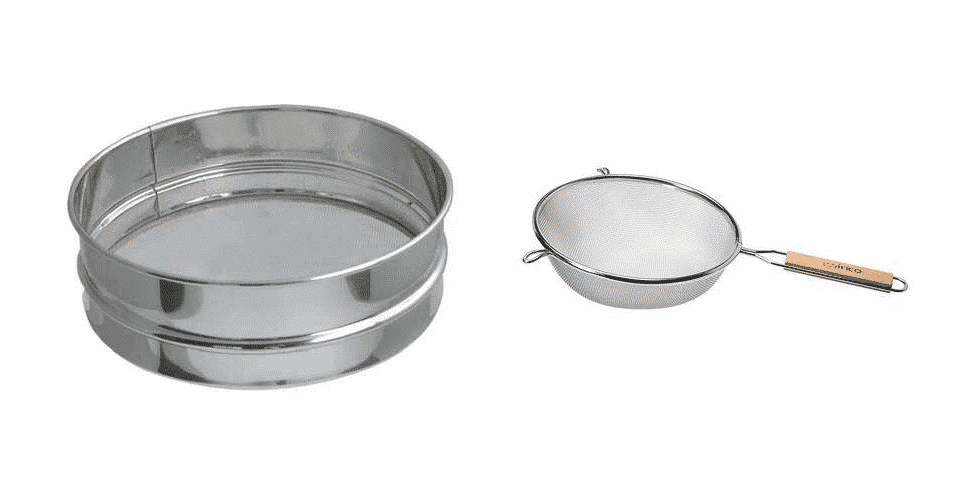
Every kitchen has a strainer to make the lump-free liquids and for straining out the unwanted food lumps. Contrary to usual belief, there are different types of straining tools available for kitchens, such as sifter vs. strainer. These tools are often confused but are completely different from each other. So, if you have to strain tasks to do, we are sharing everything you need to know about sifter and strainers!
Sifter vs Strainer
Sifter
To begin with, a sifter is known as a sieve which is the tool used for aerating, separating, and breaking up the clumps and particles. It can be used for breaking up and separating clumps of different sizes. Sifters can be used with liquid as well as dry ingredients (you have probably seen your mommy use a sieve with flour).
With a sifter, the clumps and coarse particles can be broken up or separated by grinding the particles with one another. The sifters are designed with screen openings that are known as the woven screen. Generally, this screen is made from metal, net, or mesh. These screens have perforations but the outcome is different according to the food items.
The sifter tends to sift the powder and ensures no left-behind food particles on the mesh or net screen. It is generally used for separating the wanted parts from the unwanted materials. Also, it is suitable for categorizing particle size. The sifter has the capacity to aerate, separate, and break up the flour. It wouldn’t be wrong to say that sifters can filter the dry ingredients.
In addition to metal sifters, there are wooden sifters with which the mesh is made from wicker and/or wood. In case you have to use a sifter for sampling purposes, it’s best to use wooden sifters. As far as the rims are concerned, they can be made of beech wood, oak, or fir wood. The sifters generally have a wider diameter for convenient and quick sieving of dry ingredients.
Strainer
To begin with, the strainer is one form of sifter or sieves which is used for separating the suspended solids. It is used for separating the solids from the filtration process (it’s done from liquid). For the most part, the strainer is used for purifying or filtering the liquids from solid food. Also, it can be used for separating liquids from solid food items.
In addition to separating the liquid and solid food ingredients, the strainer is suitable for sifting fine ingredients away from the bigger ingredients. The strainers are designed with basket or spoon shape from different materials, such as nylon and metal. However, there are some strainers made with cloth. There are different densities available in mesh screening, ranging from coarse screens to fine screens.
To illustrate, the fine mesh screens have the capacity to keep the tiny particles from releasing. On the other hand, the coarser mesh screens can be used for retrieving and holding larger food items. For instance, it can be used for removing oil from the fried food items. As far as the strainers are concerned, they can be made from tinned steel, aluminum, and stainless steel.
There are different strainers available in the market to change the filtration process. As for the frame of strainers, they are durable and strong for holding larger food items. In some cases, the strainers are designed with hooks in the formed edges, so you can easily rest the strainer on the bowls and pots. There are multiple applications of strainers.
For instance, it can be used for separating the pasta from water and removing juices from beans. Moreover, it’s great for rinsing the beans, lettuce, berries, and veggies. Even more, there are different types, shapes, and sizes of strainers available in the market. A colander is a strainer made with larger holes for straining vegetables and pasta. Also, there are fine mesh strainers available with smaller holes for separating the smaller and finer food items.
The Bottom Line
To summarize, the sifters are used for straining the dry ingredients while strainers are suitable for separating the liquid food items. For the most part, both these kitchen tools work the same way (both of them have perforations or openings for separating different food items). So, did you understand the differences?